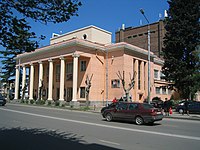
Lori, is a province(marz) of Armenia. It is located in the north of the country, bordering Georgia. Vanadzor is the capital and largest city of the province. Other important towns include Stepanavan, Alaverdi, and Spitak. It is home to the UNESCO World Heritage Sites of Haghpat and Sanahin monasteries and the well-preserved Akhtala monastery, where Armenians, Georgians, and Greeks make an annual pilgrimage on September 20–21.

Alaverdi, is a town and municipal community in the Lori Province at the northeastern part of Armenia, near the border with Georgia. It is located at the only direct rail link between Armenia and Georgia. Situated at the bottom of the Debed river gorge, Alaverdi is an important commercial and industrial centre in northern Armenia.

Akhaltsikhe, formerly known as Lomsia, is a small city in Georgia's southwestern region of Samtskhe–Javakheti. It is the administrative center of the Akhaltsikhe Municipality and the Samtskhe–Javakheti region. It is situated on both banks of the small river Potskhovi, which divides the city between the old city in the north and new in the south.
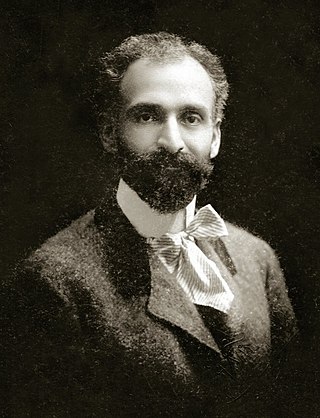
Hovhannes Tumanyan was an Armenian poet, writer, translator, and literary and public activist. He is the national poet of Armenia.

Vanadzor, formerly called Kirovakan (Կիրովական), is an urban municipal community and the third largest city in Armenia, serving as the capital of Lori Province in the northern part of the country. It is located about 128 kilometres north of the capital Yerevan. As of the 2011 census, the city had a population of 86,199, down from 148,876 reported at the 1979 official census. Currently, the town has a population of approximately 76,000. Vanadzor is the seat of the Diocese of Gougark of the Armenian Apostolic Church.

The Erivan Governorate was a province (guberniya) of the Caucasus Viceroyalty of the Russian Empire, with its centеr in Erivan. Its area was 27,830 sq. kilometеrs, roughly corresponding to what is now most of central Armenia, the Iğdır Province of Turkey, and the Nakhchivan exclave of Azerbaijan. At the end of the 19th century, it bordered the Tiflis Governorate to the north, the Elizavetpol Governorate to the east, the Kars Oblast to the west, and Persia and the Ottoman Empire to the south. Mount Ararat and the fertile Ararat Valley were included in the center of the province.
Armenians in Georgia or Georgian Armenians are Armenian people living within the country of Georgia. The Armenian community is mostly concentrated in the capital Tbilisi, Autonomous Republic of Abkhazia and Samtskhe-Javakheti region. 2014 Census of Georgia puts the Armenians in Samtskhe-Javakheti at 50.5% of the population. In Abkhazia, Armenians are the third largest ethnic group in the region after the Georgians and the Abkhazian majority.
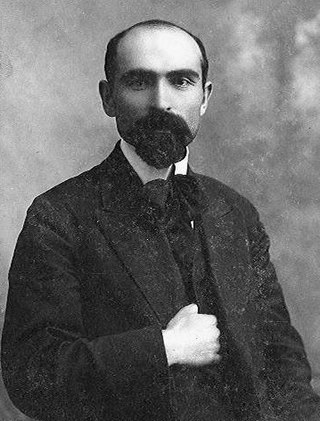
Derenik Karapeti Demirchian was a Soviet and Armenian writer, novelist, poet, translator and playwright. He began his career as a poet, but later transitioned into prose writing. He was a prolific writer whose works deal with a wide variety of subjects. He is perhaps best known for his historical novel Vardanank (1943), which is a dramatization of the 5th-century Armenian rebellion led by Vardan Mamikonian.
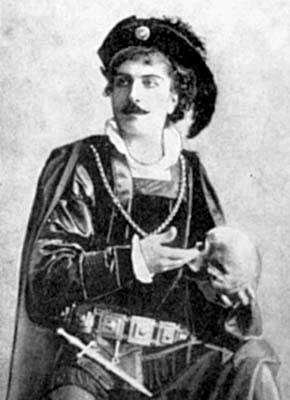
Petros Heronimosi Adamian was an Armenian actor, poet, writer, artist and public figure who worked in the Ottoman and Russian empires. He was famed for his Shakespearean roles, especially Hamlet, Othello and King Lear.

Tumanyan, is a town and urban municipal community in Armenia's northern Lori Province, on the banks of the Debed River and in the middle of the Debed Canyon. It's 149 km north of the capital Yerevan, and 131km from Tbilisi. The nearby villages of Kober kayaran, Shamut, Lorut, Ahnidzor, Atan, Marts and Karinj are also part of the Tumanyan community.

Kentron, is one of the 12 districts of Yerevan, the capital of Armenia. It comprises the downtown, the commercial centre of the city. As of the 2011 census, the district has a population of 125,453.

The Armenian Pantheon of Tbilisi, also known as Khojivank or Khojavank, is an architectural complex in north-eastern part of the Avlabari district of Tbilisi, Georgia. It occupies part of the site of the destroyed cemetery of Khojavank and contains the relocated tombstones of some of the notable Armenian writers, artists and public figures that were buried there.
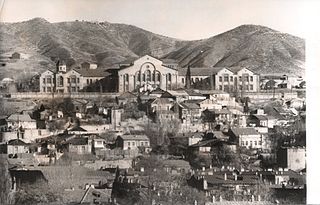
Nersisian School was an Armenian higher education institution in the city of Tiflis, then Russian Empire. It operated exactly for one century, from 1824 to 1924. It was founded by Bishop Nerses V Ashtaraketsi, Armenian primate of the diocese of Georgia, after whom it was named.
The Armenian Theater dates to before Roman times and is one of the oldest Eurasian theatrical traditions. Alongside Greek and Roman theatres, it stands as one of the world's most ancient theatres. The ancient and beloved form of theatrical art is lyrical (profound) drama, which exerted its influence on the folklore of the Near East, Balkan, and Apennine peoples. Within this cultural context, Armenian folk and mystical drama, characterized by its dance elements, also took shape. Although the ancient theatre system hasn't been preserved, it has left its linguistic marks.

Petros Adamian Tbilisi State Armenian Drama Theatre was established in 1858 by the Armenian theater activist Gevorg Chmshkyan. Armenian writer Gabriel Sundukyan was among the supporters of theater.

Armenian-Azerbaijani cultural relations are relations between two ethnic groups in terms of their language and culture.

Olga Gulazyan was a Soviet–Armenian actress of film and theater. Laureate of the Stalin Prize (1952) and the State Prize of the Armenian SSR (1967).
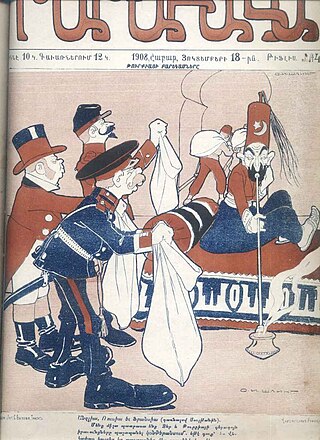
Khatabala was a twelve-page Armenian satirical periodical published in Tiflis (Tbilisi) from 1906 to 1916 and again in 1922 and 1925–26 in the Armenian and occasionally Russian and Georgian languages. It was founded by Astvatsatur Yeritsyan (1872–?), who edited the periodical along with Ashot Atanasyan (1870–1941). The name of Khatabala comes from a popular word used by Armenians, Georgians, Azerbaijanis and Persians meaning misfortune, setback, or troubles, ultimately derived from the Arabic words ḵaṭā 'error' and balāʾ 'trouble, tribulation'.
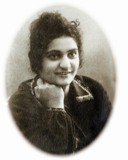
Tamar Hovhannesi Tumanyan was a Soviet Armenian architect. She was awarded the title, Honored Worker of Culture of the Armenian SSR (1977). Her father was poet and writer Hovhannes Tumanyan.
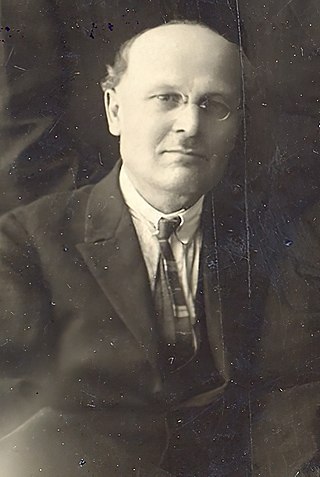
Anton Mailyan was an Armenian Soviet composer, musical and public figure, prose writer, librettist, conductor, teacher, folklorist and Honored art worker of Azerbaijani SSR.


